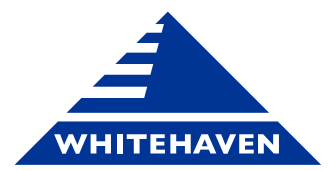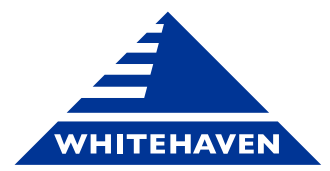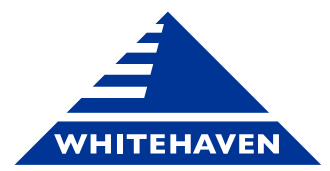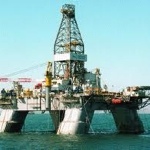Title Page
Equipment Owner Information
-
Company
-
Phone Number
-
Email Address
Equipment Information
-
Make
-
Model
-
Year
-
ID/ Call Sign
-
Registration Number
-
Serial Number/ VIN
-
Gross Vehicle Mass (GVM) in Kg
-
Hour Meter
Inspector Information
-
Name
-
Company
-
Date of Inspection
Emergency Equipment (Fire Extinguishers)
-
Fire Suppression system is as per AS and fitted to the drill plant. Fitter with current inspection tag (6 monthly) and in charge (green zone) with a 1 yearly service
-
The condition and placement of the fire suppression activation points are appropriate for the equipment.Preferably one on each side of the equipment and one located on the control panel or in close proximity, fire suppression system is operable from ground level and anti-tamper seals/pull pins do not impede rapid and safe initiation of the manual activation system)
-
Two activation points for fire suppression system which are accessible from ground level. One activation point at the drillers control panel. (i.e. three activation points in total). Location label in place.
-
Minimum of two fire Extinguishers to be 9kg DP type, to be fitted with a current inspection tag (6 monthly) and in charge (green zone) & accessible from ground level. Location label in place.
-
Fire suppression gauges on the control panel and ground level, clean and easily read.
Safety / Emergency Documentation - current and available to Driller/Fitter/Crew e.g Rig iPad or hardcopy)
-
Pressure Vessel Certification check PRV annual test tag. (Compressors only)
-
Pre start Inspections / Maintenance Documentation/Schedule
-
Registers for Lifting Ropes and Chains (list of ropes/chains on rig, manufacturer, certification numbers, date fitted, date due)
-
Registers for Bow Shackles and Rated Anchor Points. All items certified, tested and tagged.
-
Rig Operators Manuals
-
Rig to have a full set of drawings and certification including a tracked history of modifications.
-
Compressor pressure relief valve inspection (<2 yr interval).
-
Receiver tank NDT inspection 2 yearly external / 4 yearly internal.
-
A lifting equipment register is avaiable? (list of lifting gear on rig, annual NDT records are avaiable, date due for replacement or re-inspection)
-
Register for Working at Height equipment (harnesses, attachment points, static lines etc)
Signage - Note: all signage must be clearly visible & in good condition.
-
Mandatory PPE required on Rig installed and legible.
-
Emergency Stop Buttons - labelled & legible.
-
Remote Controlled Emergency Stop - Clearly labelled , secure & protected.
-
Battery Isolation / Starter Isolator - labelled & legible.
-
Jump start receptacles clearly labelled & legible.
-
Pinch points – clearly identified and labelled or eliminated if possible. Check around mast area, access ladders, walkways.
-
Vehicle height marked inside cabin.
-
All oil drain points. Engine oil , Hyd oil, Gear oil etc.
-
High Air Pressure attachment points and air receiver tank labelled & legible.
-
Fuel, Hydraulic Tanks, identified, labelled & legible.
-
Rig Specification Placard. Specs on rig, serial number, rod loader specs, head pullback. Pull down, haul winch pullback, rod loader specs, water pump injection specs, mud pump specs, coring pump specs
-
First Aid, Fire Extinguisher, Spill Kits, location labelled & legible.
-
Controls levers, drillers control panel labelled & legible including all accessible taps.
-
Positive ID Signage (reflective sign or letters as per site requirements on side/rear of equipment). Rig number/ plant number.
-
Appropriate warning signage installed (e.g Hot Surfaces, WAH, 3 Points of Contact)
-
Water tank contents identified, labelled & legible (e.g non-potable water)
Lockout/Isolation/Emergency Stop
-
Appropriate emergency stops fitted to the drill plant. All stops to be labelled. Minimum requirements are:<br>1 x emergency stop fitted to the drill panel<br>2 x emergency stops – one fitted to each side of the drill plant<br>1 x remote emergency stop – to be positioned a minimum of 30 metres (Test all)
-
Battery isolation switches fitted, working & lockable – check all of them by installing lock & move lock within the confines of the mechanism. Check operation test for dead. RED IN COLOUR
-
Starter motor isolation switches fitted, working & lockable – check all of them by installing lock & move lock within the confines of the mechanism - marked yellow. Check operation test for dead. YELLOW IN COLOUR. (Must positively isolate the starter system electrical or air)
-
Jump start receptacles - Rig / Compressor/Prime mover.
-
A remote shutdown facility in place & easily identifiable. (Check storage container)
ALL moving parts Guarded in accordance with AS4024 and WHC QLD STD Safeguarding
-
All hot parts guarded other than exhaust manifolds and turbos.
-
Pumps/ Fans/ alternators/ belts guarded.
-
Guarding / Lagging / or Heat shielding on exhaust manifolds and turbos.
-
Interlocked table / rod rotation guard of sufficient size to prevent access to the rotating drill rods If the rod cage has any potential pinch points these must be enclosed.
-
Check the operations of Interlocked system. An interlock guard is connected to the plant's operational controls so that the plant is prevented from certain operations until the guard is closed. Rotation movement / torque is completely removed when the guard is opened.
-
Foot clamps guarded (Important note: ensure a foot clamp guard is fitted with a Rod Spinner)
-
Pinch point around guard & drive / rotation head etc - With or without guard in place.
-
Wireline and main haul winches, if mounted on the deck or bottom of the mast guarded.
-
Driller's overhead protection is present? (rated with plaque/stamped, approved)
Compressed Air / High Pressure Air Lines and attachment points.
-
The water injection system shall be fitted with a stainless steel one-way valve to prevent pressurization of the Bean pump from the drilling system.
-
No low pressure fittings in high pressure air lines (Galvanised water pipe fittings)
-
Condition of hoses - in good condition free from damage. No damage to outer casing.
-
High pressure airlines adequately clamped - security / including rated shackles rated anchor points. (INSPECT ALL)
-
Double Rated Anchor points fitted at the hose / on all flexible compressed air lines (INSPECT ALL) Opposite anchor points for hose sock attachments.
-
Bull hoses / High-pressure hose's shall have Hydraulic crimped fittings (NO Dixon Boss Bolt Type fitting)
-
Air tap or control easily accessible from drillers control panel.
-
Vent tap in place to release stored energy from the drill string. Water pressure/ Air pressure. Where possible or connected to T-Piece / diverter / under chassis of the rig carrier.
-
If rig is fitted with an inboard compressor then it should be silenced. It must have a separate compliance inspection for compressors.
-
What is the condition of all hosing and piping? (routing, security, mounting, leaks)
-
What is the condition of the receiver tank mounting? (reciever tank is free of signs of damage, corrosion or rust, receiver element cover security is intact)
-
Are the receiver documentation records avaiable? (Plant registration, design and inspection certificates, MOR and housing stamped)
-
What is the condition of the Pressure Relief Valves (PRV)? (tamper proof intact, valves in good condition, current inspection report <2 year interval, identification plate correspondes to sinepction record, PRV's face away from work areas)
-
What is the condition of the blow down silencers? (Included running blow down and rod string dump)
-
Does all auxiliary air meet requirements? (regulated, downward facing connections - 45 - 90 degress, condition of supply hose and fittings)
-
Is there a sight glass on the scavenger line? (fitted, easily accessible, clear, operational)
-
The equipment has a high temperature shut down fitted to the dry side of the compressor? (maintained, inspected/tested, operational)
-
Is there an intermediate stage pressure guage fitted? (installed and operable, guage mounted and clearly visible on either side the drillers control panel or the equipment itself)
-
Are all hose restraint anchor points fit for purpose? (engineer designed/sign off, 4 part bow shackles, no daisy chaining)
-
Are suitable hose restraints fitted to all relevant hoses? (double leg design, ful length on travelling hoses and booster/auxiliary units, approved engineered guards on short hoses, undamaged)
-
What is the compressor general condition? (if sperately driven, rig emergency shut downs include compressor)
-
Are any hydrocarbon leaks evident? (water pump)
-
What is the condition of the discharge hoses? (correct rating, damage, splits)
-
What is the security/condition of the flange bolts and hose clamps?
-
All rotating equipment is guarded as per Australian Standard 4024?
-
Are all pressure relief valves and outlets facing down and in date? (Relief valve <6 months old, tested and documented)
-
Pump has a fit for purpose hand-piece (fixed pressure, auto off) for washing/cleaning?
Hydraulic Systems & Controls
-
Inspect hydraulic cylinders, controls, pumps ,motors - for leaks.
-
Inspect hydraulic hoses / fitting / control valve - cuts & torn outer casing, general damage and leaks.
-
Inspect hydraulic control levers for excessive movement.
-
Operational pressure gauge in the hydraulic system.
-
Any hydraulic hose with the potential to cause harm (through an uncontrolled release of fluid caused by hose failure) shall be re-routed, guarded, energy-diffusion sleeved, or fitted with rated socks. These hoses include all which are located within 2 metres of work or access areas.
-
Single easily accessible main shutoff tap from hydraulic tank.
-
Hydraulic hoses adequately clamped or supported (e.g. spiral hose wrap, hose socks on travelling hoses up the mast)
-
Inspect hydraulic fittings and connections for leaks. Fittings not showing signs of corrosion.
-
Are warning lights/alarms fitted and operational (low oil pressure, rod handler and specific equipment operational alarms etc.)
Tower/ Mast Inspection (Visual inspection - checking for signs of structural damage or cracks in welds)
-
A Frame Pivot Point - visual inspect condition.
-
Structure (Mast) - visual inspect condition of remote grease lines, sheaves, pulleys etc.)
-
Mast Dump - visual inspection of structural condition for damage and loose/missing bolts. Hydraulic rams and attachment points. Looking for cracks due to over loading removing stuck pipe.
-
Tower locking pins - lockable, secure & visually inspect condition.
-
A Frame including anchor/ attachment points for rams - visual inspect condition.
-
NDT inspection certificate - Mast / A-Frame / Critical Components (Rigs < 5 years old – No inspection certificate required Rigs > 5 years old – Inspection certificate issued within the last two years)
-
Tower base adequately supported. Tower should be fitted with a foot structure positioned on ground or supported by timbers. Tower support to be adequate to maintain tower component integrity for drill string weight & pullback
-
A drill rig mast shall be fitted with both a raising-lowering alarm and a mast-dump alarm to warn all persons with in the work area.
-
Are all mast attatchments secondary retained? (secondary retention on all attatchments above head height, redundant equipment removed)
-
What is the condition of the foot clamp assembly? (cracks, rod slip inserts, guarding)
-
What is the condition of the mutli sized rod spinner? (mounts, general condition, hosing, leaks)
-
Rotation Head has an effective anti-collision system installed and operational? This must ensure that the rotation head cannot impact the rotation guard, rod retention system, any other parts of the structure itself or any additional tooling in the mast.
-
What is the condition of the rotation head? (leaks-spindle, hydraulic hoses, rmeote grease lines, alignment with centre of table)
-
What is the condition of the rod cradle/plug slide? (mounts, pivots, damage)
-
Is there an operational rod retetion system fitted? (mounts, pivots, condition, security, collision avoidance system)
-
What is the condition of the rotation guard? (when activated, results in a zero energy state for rotation, traverse and all other ancillary equipment within and on the mast structure itself, condition, complaint with AS4024)
-
Is there a hydraulic hands free breakout system fitted to the equipment? (The requirement for this syetm is to be completely hands free, not partially hands free)
-
What is the condition of the hydraulic hands free breakout system? (leaks, approved break out system)
-
What is the condition of the angle attachments and mast lock? (condition, leaks, cyclinders, approved visual/audible confimation system, hands free installation and removal. Alarm/light displaying when mast lock engaged).
Hoisting Equipment
-
Maximum service life of wire ropes and chains: Main winch rope, Boom winch rope, Wire-line rope - 12 months; Pull-back ropes, pull-down ropes, Hose reel rope - 12 months (If demonstrated single shift only - 24 months); Pull-back chains, pull-down chains and sprockets - 12 months (If demonstrated single shift only - 24 months).
Pulleys/wire rope or chain feeds and pivot pins
-
What is the condition of all pull back/pull down ropes/chains? (wear, termination of ropes, stretch, double lock nuts on adjusters and corectly tensioned)
-
Belts, chains, pulleys, winch assembles, all sheaves and travelling sheaves blocks and/or sprockets and other drive/moving and sliding parts in good condition and adjustment (leaks, sheaves, adequate guarding)
-
Hoist Drum/Wireline drum - in good condition. Visual inspection of drum whilst moving. Test for operation
-
Limiter for main winch and wire line fitted. Test for operation.
-
Limiter for haul lines fitted. Test for operation.
-
Winch boom has an effective anti-collison installed and operational? This must ensure that the winch boom cannot be impacted by or impact the rotation head.
-
Wire line size should be a minimum 6mm high tensile.
-
Wire-line by a splice which was completed by a certified rigger or by a crimped connection compliant to the SWL of the wire-line.
-
Bow shackles - Stamped with SWL, in good condition and tested and tagged.
-
Lifting Equipment / Hoist Plugs - Stamped with SWL, in good condition and tested and tagged.
-
Lifting / Drive / Subs - In good visual condition.
-
Haul line pin full plate secured. (Safety Clevis Pins)
Rod Handling Equipment - (Visual inspection )
-
Is a rod loaded fitter and operational?
-
Power Tongs / Break Out Tongs / Rod Clamps / Skillets - condition. (Modified Stillsons and hydraulically powered Stillsons prohibited on WHC sites.
-
Hands free rod spinner and breakout system
-
Table and deflector guards - condition.
Working Platforms / Access
-
Working Platforms - complies to AS1657. NB: Ensure handrails are a minimum 900mm above top of highest load / no large gaps under rails.
-
Adequate drillers & offsiders platform with access stairs / safety step.
-
All platforms have edge protection systems fitted. Must be in compliance with AS 1657. Toe rails must be fitted.
-
Access ladders / stairs to the plant decks in good condition. Steps on ladders to have non slip tape or mesh. Must not introduce pinch points. Must facilitate 3-point contact protocols.
-
No exposed edges where people can access rig deck without handrails. Look for where people can stand (e.g. on top of toolboxes / hydraulic tanks)
-
Hand rail system fitted to rod bin / sloop.
-
Easy access to fill point (access ladder)
-
Where possible stairs should be fitted.
-
Are all working at heights anchor points & static line labelling (including name of installer, installation date, name of ceritifer, certification date, highest purpose, maximum number of people, as per AS 1891.1) fitted
Rod Loader
-
Rod handler fitted with an audible alarm when slewing
-
KL type Rod Loader fitted with limiters to prevent rod clamp slide activation above 15 degrees
-
Rod Loader fitted with a Dead Man switch for clamp slide activation (e.g. Sandvik UDR/KL/KWL) or clamp release (foremost).
-
Isolation point to prevent accidental activation of rod loader controls while packing up or setting up site.
-
Audible alarm on clamp open function.
-
Fail to safe application rod grips.
-
Interlocking to prevent accidental rod drop.
-
Dropped rod protection system.
Jacking System
-
Hydraulic jack-legs shall be independently operable to provide stability. Jacking pads and feet shall be of adequate size. Consideration shall be given to the locations of the jacking rams on the rig, size of the jacking pad, configuration, type of drill hole (with or without a collar)
-
All rigs shall have 4 hydraulic levelling jacks, (2 at the front - either side and 2 at the rear - either side). Jacking systems on drill rigs, sloops and other equipment shall be fitted with hydraulic fail-safe valves (e.g. compensating pressure valves, load lock valves.) Steel supply lines from the ram to the load lock valve.
Onboard Rig Engine
-
Drain taps to be fitted to oil drain outlets.
-
All oil drain points to a central accessible location at side of rig.
-
Exhaust system is to be secure, within specification and fit for purpose. Not able to be used as a hand rail, it also includes turbos, manifolds and mufflers .
-
What is the condition of the oil cooler? (Required guarding, oil leaks, fan, hydraulic motor, belts, mounts, cleanliness)
-
What is the condition of the cooling system? (Radiator, water pump, coolant leaks, hose condition/clamps, fan, guarding, radiator cap has manually operated pressure relief valve with overflow tube fitted)
-
What is the condition of all the belts? (adjustment, cracks)
-
What is the condition of the exhaust manifold/piping/muffler? (leaks, security, free from debris easily accessed areas are lagged/guarded)
-
What is the condition of the turbo? (cover, sheilding, leaks, security)
-
What is the general engine condition? (rotating parts guarded to Australian Standards)
-
What is the condition of the engine mounts? (secuirty, cracks)
-
What is the condition of the wiring and air lines? (routing, seperation, security)
-
What is the condition of the started motor? (connections, mounting)
-
What is the condition of the alternator (adequate guarding, mounting)
-
What is the condition of all hydraulic pumps and drives? (secure mounting and required guarding, shafts/couplings in good condition)
-
What is the condition of all work lights? (test function, are there adequate lights for night operation).
Other
-
Mud pump relief valve fitted.
-
Pump out / Bean Pump hose is fitted with a end tap.
-
Dust / dirt deflector and mounting frame in good condition.
Completion
-
Have any of the listed requirements been marked as a "Fail"?
-
General Recommendations/ Comments
-
Photographs of Equipment
-
Singature









